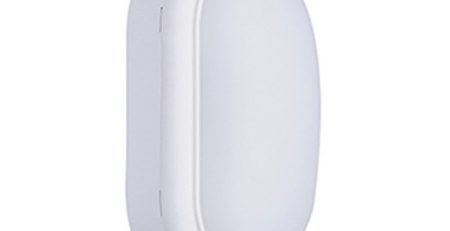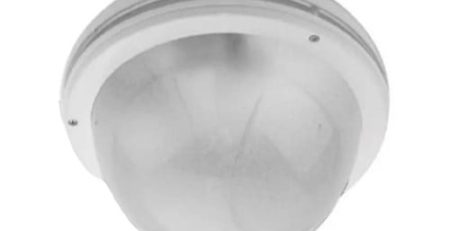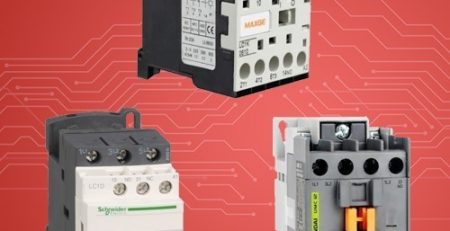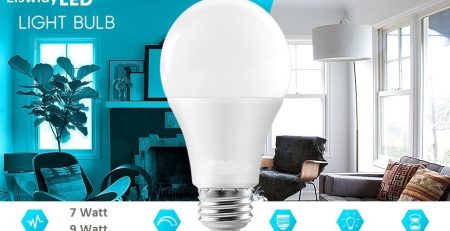Types of electrical cables and their sizes More than 20 types
Types of electrical cables and their sizes More than 20 types

Contents
Electrical cables are an important part of any electrical system, as they are used to transmit and distribute electricity. They come in different sizes, shapes, and colors, depending on the type of wire or cable used. In this article, we will discuss the types and sizes of electrical cables and how they work, as well as the components of electrical wires and the cable sizes available. We’ll also look at some important considerations when choosing the right size for your needs and the specific requirements of the environment in which the cable is installed.
Electrical cable components
Electrical cable components play an important role in ensuring the proper performance and safety of the cable. Electrical cables must be made of high-quality materials that can withstand extreme temperatures, humidity, and other environmental conditions. Electrical cables consist of several components, each serving a specific purpose. These components include:
- Conductor : It is the core and most important component of electrical cables. It is usually made of copper or aluminum, which transmits electrical current from the power source to the load.
- Insulators : Protect electrical wires and cables from contacting each other, as well as the ground. Common materials used for insulation include PVC, rubber, and Teflon.
- Shielding : Shielding is used to prevent electromagnetic interference (EMI) and radio frequency interference (RFI) from affecting the electrical signals being transmitted through the cable.
- Sheath : The sheath is an essential layer for protecting cables because it prevents damage caused by corrosion and other environmental factors. Common materials used for jackets are PVC, nylon or rubber.
- Drain Wire : A small, bare copper wire used to ground the shield, providing a path for a static charge that can build up on the shield.
Types of electrical cables and their sizes
Each type of electrical cable has its specific uses and advantages, and the choice of cable depends on the transmitted voltage, the required current carrying capacity, and the specific requirements of the environment in which the cable is installed. Some of the most common electrical cables and types include:
1 . Copper cables : Commonly used in electricity and power distribution industries because they have great conductive properties and low resistance rating.
2 . Aluminum cables : Their use in transmission and distribution of electricity has become more common. This is because they are lighter and better in budget compared to copper cables, but they have lower conductivity and higher resistance than their counterpart also called armored cables.

3 . Fiber optic cables : They are essential in sending optical signals over long distances. Made of glass or plastic, they have become indispensable for a variety of tasks and applications, such as high-speed data transfer and communications as well as industrial and military uses.
4 . Low voltage cables : They have become more widespread because they are ideal for transmitting electricity at low voltages of up to 1000 volts. This type of cable is commonly found in residential and commercial buildings as well as in industrial environments.
5 . Medium voltage cables : used to transmit electrical power at voltage levels between 1000V and 69kV kilovolts. These cables are commonly used in power transmission and distribution systems, as well as in industrial and production process control applications.
6 . High Voltage Cables : Able to effectively transmit electrical energy over long distances, making them a great solution for transmitting and distributing large amounts of electricity.
7 . Single-core cables : These are those that contain a single conductor, or wire, surrounded by insulation. These cables are typically used for low voltage and current applications, such as residential and commercial wiring, as well as in lighting and control systems.
8 . High Temperature Cables : Ideal for any application where the temperature exceeds the limits of standard cables. They are widely applied in industrial and commercial areas exposed to high heat sources such as boilers or furnaces.
9 . Fire-resistant cables : They are designed to maintain their electrical properties for a specified period of time in the event of a fire.
10 . Portable power cables : Used to transfer electrical power from a portable generator or other source to portable equipment, such as lights, tools, and other devices. These cables are designed to be flexible, durable, and easy to use and transport.
11 . Pair-shielded cable : Used in applications where electromagnetic interference (EMI) or radio frequency interference (RFI) can affect electrical signals. They provide a barrier that helps protect these signals and reduces interference from external sources.
12 . Outdoor cables : Used for applications in outdoor environments, such as street lighting and utility poles. Weather resistant, often covered with a weather-resistant material to prevent damage from rain, snow, and other environmental conditions.
13 . Ground Cables : The ground cable is an important component in grounding applications and is essential for safe operations and in many electrical systems, providing a low-resistance path for electrical current to flow to the ground, and for protection against electrical shock and overvoltage conditions.

14 . Coaxial cable : Used for a variety of high-frequency tasks, such as television and radio broadcasting, and is also used to transmit data. Coaxial cables consist of a central conductor surrounded by insulating material, a metal shield, and an outer jacket.
15 . Control cables : Necessary for control systems to function properly. They are designed to send signals between devices, such as sensors and switches, and allow automated operations. These cables are usually small in size, but strong enough to provide reliable performance.
16 . Signal cables : Necessary for sending signals such as voice, video, or data. This type of cable has multiple purposes, especially when it comes to multimedia applications.
17 . Solar cables : Essential for photovoltaic (PV) systems, allowing electrical energy to be transferred from solar panels to inverters, batteries, and other components. This helps in delivering high levels of efficiency and performance.
18 . Welding cables : They are designed with rubber specifically for welding applications as they can withstand the difficult conditions encountered in such work. Not only are these cables highly flexible, they are also incredibly durable allowing for efficient and safe soldering operations.
19 . Flexible cables : They are indispensable in applications that require flexibility and movement, such as in moving equipment where the cable is subjected to frequent bending.
20 . Submarine cables : They are specially designed to withstand the harsh conditions of the marine environment. These include salt water, corrosive materials, and extreme temperatures that can affect conventional cables. They are commonly used on ships, boats and offshore platforms due to their ability to survive challenges.
21 . Instrumentation cables : Used to transmit signals from instrumentation and control systems, allowing data to be transmitted from thermocouples, transducers and load cells.
Electrical cable sizes and sizes
Electrical cable size is the maximum amount of electrical current that the cable can safely carry without overheating. This rating is usually stated in amperes (Amperes), and is determined by conductor size, insulation type, and operating temperature.
Electrical cables come in a variety of shapes and sizes, and it is important to understand these differences when choosing the right cable for your project. Knowing the size of cable you need and its current rating is essential to ensuring your electrical system operates safely and efficiently. The cable size is represented by a number that corresponds to the cross-sectional area of the conductor which is square millimeters (mm2). Common mm2 sizes range from 1.5mm2 to 500mm2.
What are square millimeters (mm2)?
Square millimeters (mm2) is a metric unit used to determine the cross-sectional area of electrical conductors. The larger the mm2, the greater the cross-sectional area of the conductor, and the greater the electrical current it can carry. For example, a conductor with a cross-sectional area of 1.5 mm2 can carry a maximum current of 15 A, while a conductor with a cross-sectional area of 16 mm2 can carry a maximum current of 95 A. These are all examples of mm2 sizes and their corresponding current carrying capacities:
| Cross-sectional area in: mm2 | Maximum current in amps | Cross-sectional area in: mm2 | Maximum current in amperes |
| 1.5 mm2 | 13 amps | 120 mm2 | 877 amps |
| 2.5 mm2 | 21 amps | 150 mm2 | 1088 amps |
| 4 mm2 | 33 Ampere | 185 mm2 | 1334 Ampere |
| 6 mm2 | 48 | 240 mm2 | 1721 |
| 10 mm2 | 77 | 300 mm2 | 2144 |
| 16 mm2 | 124 | 400 mm2 | 2880 |
| 25 mm2 | 195 | 500 mm2 | 3650 |
| 35 mm2 | 259 | 630 mm2 | 4620 |
| 50 mm2 | 385 | 800 mm2 | 6000 |
| 70 mm2 | 531 | 1000 mm2 | 7500 |
| 95 mm2 | 719 |
Cables used in outdoor environments may need to be rated for use in wet locations, and may need to be able to withstand extreme temperatures. The best way to ensure you select the right size and size of electrical cable for your specific purpose is to consult a licensed electrician or electrical engineer to ensure your work.
Important factors when choosing an electrical cable
Choosing the right electrical cable is an important decision that can have a significant impact on the safety, performance, and longevity of your electrical system. There are many factors to consider when choosing an electrical cable, such as:
- Know the cable voltage rating and rating.
- Level of insulation material.
- Gauge of wire or conductors.
- Size and weight.
- The current or current carrying capacity of the cable.
- Evaluate the temperature it can withstand.
- Withstand the environmental conditions in which it will be used.
- Consider cable length and orientation when choosing it.
- The cost of the cable should be considered when choosing.
- The cable must meet national electrical codes and standards.
The difference between electrical cables and wires
Electrical cables and wires are among the most important components of any electrical system. Therefore, many confuse these two terms, but they differ in their understanding and design, and their construction and purpose remain different. Find out the differences in the following table:
| Cables | Wires |
| – Electrical cables consist of one or more insulated conductors. | – Wiring consists of a single conductor, usually uninsulated. |
| – Cables are used for high voltage applications such as power distribution and high current. | – Used for low voltage applications such as connecting components in a circuit. |
| – Electrical cables consist of several wires bundled together and covered with an insulating material. | Wires are single cylindrical conductors used to transmit electrical current. |
| – Cables are thicker than wires, allowing them to carry more current over longer distances. | – Made of metal, such as copper or aluminum. |
In essence, a wire is a single electrical conductor whose use is suitable for low voltage and low current applications while cables are bundles of multiple conductors that can be used for high voltage and current.
Colors of electrical cables
Different colors of cable are often used to indicate different functions and to make it easier to understand and trace the types of wires, but they are not standardized and the understanding of their colors may vary from country to country. Here are some common color codes used for electrical wires:
- Black and red: hot wire.
- White: White is used for neutral wires.
- Green: ground wire
- Blue and yellow: power control wires.
If you have any inquiry, please contact us freely and we will be happy to serve you.

Jezli website for purchasing electrical appliances
When we say Jeezly website, we are talking about one of the most famous Arab websites that was able, in a very short period of time, to achieve a very large demand for purchases from it by people from various parts and sectors of the Arab world.
On the Jeezly website, you will find a joint look and all the products that you may need in your home, starting with those for kitchens or bathrooms, but even those for gardens, you will find them on this wonderful site.
So, if you were lost before and did not know where to go to buy your products on the Internet, now you have the perfect solution, and all you have to do is go to the Jezli website and start choosing the products you want.
 What are the features of Jeezly ?
What are the features of Jeezly ?
Since we are talking about a site that is preferred by many people around the world, there is no doubt that it is a site full of various features and characteristics. Therefore, we have decided to devote our next paragraph to pointing out the most prominent features of the Jezli site.
One of the most prominent features of the site is the proportionality of prices. On the Jeezly website, you do not have to worry about the imaginary prices of the products, as is the case with most sites that display their products on the Internet.
The price of delivering products is very reasonable and not expensive, and the site accepts delivery to various countries, without forgetting that it accepts free shipping on some products.
One of the advantages of the site is also the high quality of its products, as it is impossible to find a poor quality product. Rather, the Jezli website deals with major companies, Philips, for example, and other famous brands, so you must remove from your mind the idea of the poor quality of one of the products. Another advantage of the site is that it does not specialize in one type of product, but rather you will find various types of products on it, for example, electrical appliances, hand tools, mechanical devices, paints, packages for establishing apartments, and many other types.
Jeezly website also accepts what is known as the shopping cart, which makes it easy for you to filter the products you want to buy and put them in one package in order to be able to pay with the click of a single button.
Accepts multiple payment methods.
We are pleased that you visit our social media pages, where we publish exclusive offers on our website.
Our Facebook page is here .
Our Twitter account is here .











Leave a Reply
You must be logged in to post a comment.